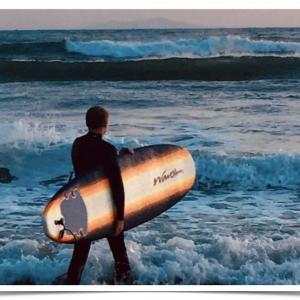Engaging English (F20 ENGL 202-01 Purdue) Dashboard
Description
 This class will teach you how to surf (the Internet) and about the various ways that English studies have been transformed over the last few decades. Starting with some basic close-reading and analysis skills (aided by annotation at COVE Studio), we will then explore how those skills have been increasingly applied to new areas of inquiry (tv, film, culture, critical theory, and politics). Throughout, we will employ new digital tools that change the way we approach our subjects of inquiry, including Web annotation, timeline-building, gallery-building and GIS mapping. As we proceed, we will consider the nature of English studies: What is an English department and how does it relate to the rest of the university? What can you do with an English degree? Why is it necessary to fight for English in an increasingly STEM-oriented world?
This class will teach you how to surf (the Internet) and about the various ways that English studies have been transformed over the last few decades. Starting with some basic close-reading and analysis skills (aided by annotation at COVE Studio), we will then explore how those skills have been increasingly applied to new areas of inquiry (tv, film, culture, critical theory, and politics). Throughout, we will employ new digital tools that change the way we approach our subjects of inquiry, including Web annotation, timeline-building, gallery-building and GIS mapping. As we proceed, we will consider the nature of English studies: What is an English department and how does it relate to the rest of the university? What can you do with an English degree? Why is it necessary to fight for English in an increasingly STEM-oriented world?
Scroll down to "Galleries, Timelines, and Maps" in order to add items to our collective map, timeline and gallery exhibit.
Our texts at COVE Studio:
William Wordsworth, "The world is too much with us" (published 1807) | William Wordsworth, "Surprised by Joy" (published 1815)
Percy Shelley, "To Wordsworth" (published 1816) and "England in 1819" (written 1819, published 1839) | Percy Shelley, "Lift not the painted veil" (published 1824)
John Keats, "If by these dull rhymes" (written 1819, published 1836)
Elizabeth Barrett Browning, Sonnet #22 and 32, Sonnets from the Portuguese (published 1850)
Dante Gabriel Rossetti, "The Sonnet" (published 1881) | Dante Gabriel Rossetti, "The Portrait" (Sonnet 10 of The House of Life; written 1869, published 1881) | Dante Gabriel Rossetti, "Body's Beauty" (Sonnet 78 of The House of Life; published 1881)
Christina Rossetti, "In an Artist's Studio" (written 1856, published 1896)
Gerard Manley Hopkins, "God's Grandeur" (written 1877, published 1918) | Gerard Manley Hopkins, "Spring" (published 1918) | Gerard Manley Hopkins, "As kingfishers catch fire" (published 1918)
Jericho Brown, "The Tradition" (published 2015)
William Butler Yeats, "Leda and the Swan" (published 1924)
Emily Brontë, Wuthering Heights
Joseph Conrad, Heart of Darkness, Part One (published 1902) | Joseph Conrad, Heart of Darkness, Part Two (published 1902) | Joseph Conrad, Heart of Darkness, Part Three (published 1902) | Click here for Cannon Schmitt's COVE Editions version of Heart of Darkness
Galleries, Timelines, and Maps
There is no content in this group.
Individual Entries
New Harmony Indiana was chosen by the Harmonie society out of a want for seclusion and more space. It had fertile soil and a useful waterway, and among the Wabash river there were many opportunities for future expansion, so on May 10th the Rappites chose to buy the 7,000 acres that was New Harmony. Also in New Harmony were areas suitable for vineyards and farming, which once again provided ample economic expansion. The location of New Harmony undoubtadbly set it up for economic success, which it had. After a while they had expanded to 20,000 acres, and had built over 160 homes. Some visitors in fact, commented that "it seamed as though they had found themselves in the midst of Germany," with regards to the large amount of comercial and industrialised expansion that had immerged, in part thanks to the Wabash river allowing them easy trade opportunities with a wide variety of other communities. So when Robert Owen bought the community for 150,000$, he had inherited a thriving economy...
moreDuring the American Civil War, there were two Union attacks on a Confederate fort in South Carolina. Both resulted in Union defeat, however, the second attack made by a colored regiment proved these colored soldiers brave and capable of fighting in the war alongside white men. The 54th Massachusetts Infantry, one of the first all-black volunteer Union regiments, made a second Assault on Fort Wagner that took place July 18, 1863. Although it was a disastrous and costly Union defeat, it was the fourth time in the Civil War that black troops played a crucial role. This second Union attack on Fort Wagner encouraged other black men to enlist in...
more